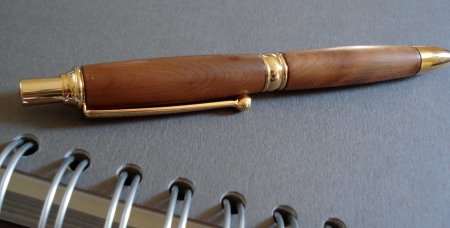
Caution. Avert your eyes! This is a joint post, and you should first head on over to Dave’s Mechanical Pencils to learn about Ancient Kauri wood. Then head back here.
It isn’t too often that a letter carrier arrives at my door bearing a package with the markings of the New Zealand postal authority.
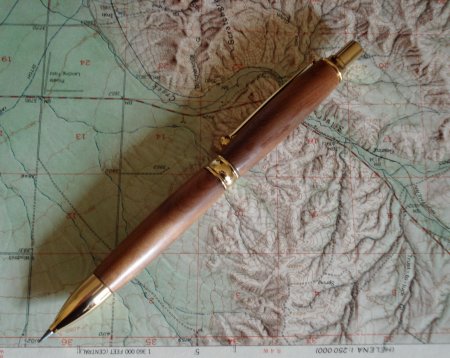
I’ll admit that I knew in advance about this parcel, and was eagerly looking forward to receiving it.
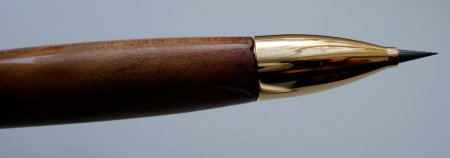
There was said to be some magic inside – ancient Kauri wood. And not in the form of a swamp log – but transformed into a mechanical pencil.
The pencil is indeed quite something – made from an ancient and historic wood that is important in traditional Maori culture.
It is now winter in Canada, and sunlight can be scarce. On a bright day, the wood just gleams and shines. Some surfaces have three dimensional aspects, and the entire surface is engaging. Bits of sap are translucent and shiny. The patterns call for twirling the pencil and careful examination. Different aspects of the wood are revealed in different light conditions.
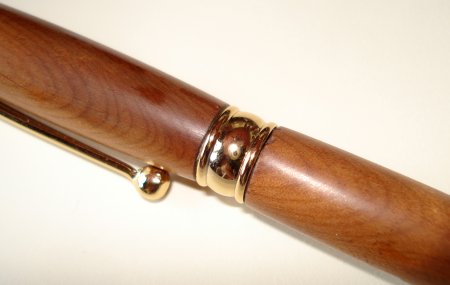
The pencil itself is 137mm long, with Kauri body and gold plated metal accents. It weighs a modest 24.4g with the included lead. It takes a 2mm diameter lead – and is in the format of a mechanical pencil, with the cap acting as a lead advance button.
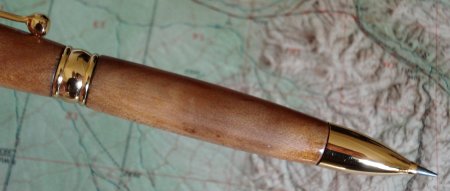
The clutch leadholder format is more common for 2mm leads. Yet recent years have also brought wide lead (defined as 2.0mm and greater) mechanical pencils such as this to the market.
This particular pencil has a nice advantage – some mechanical pencil style wide lead pencils don’t have sufficient rotational grip to support the use of sharpeners – but this pencil easily meets that goal. A minor disadvantage is that this pencil cannot accommodate a standard 130mm refill from manufacturers such as Mitsubishi or Staedtler, and about one third of a refill lead will have to snapped away to be made usable.
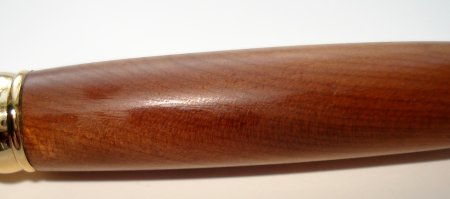
The advance mechanism requires a forceful click, but functions in a reliable manner.
The cap contains a basic lead pointer, functional in an emergency.
The grip and shape seemed visually “not quite right” to me, but have been completely fine in practice.
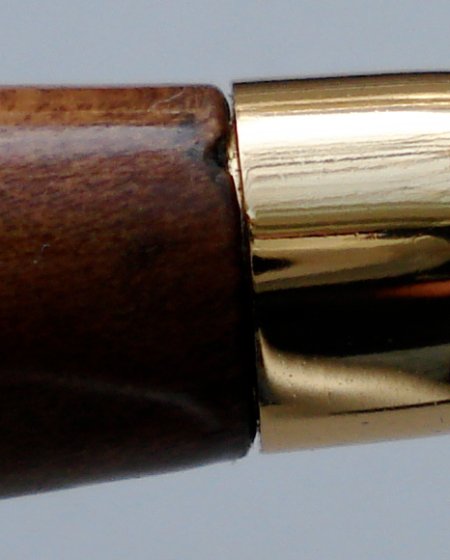
I’ll try to quickly mention the one flaw in my view – the appointments. The cap, clip, mid-section, and tip, though plated in gold, are generic and of inferior design. The Kauri seems to have no relationship with the trim. The appointments detract from the history and majesty of the pencil. No serious manufacturer could actually offer this level of quality at retail. Unfortunately, pen turners seem to have access only to extremely generic kits such as this.
The pencil writes nicely, and even if it isn’t one’s standard grip, holding the pencil on the Kauri area is irresistible!
The unique origins are another intriguing aspect – for me, contemplating the history in this pencil is very engaging.
Overall, this pencil has a fascinating history, and I am thankful for Dave’s generosity in commissioning it and sending a specimen to me.

Wow, I would just like to hold a piece of 50,000 year old wood. I also wish that photographs could capture the 3D effects of the wood.
That said, I feel for the woodturner who made these. It sounds like the wood is extremely difficult to turn. The gap between between the wood and the fittings in the last image stems from this. After turning the barrel on the lathe, you have to trim it to make it flush with the fittings. Unfortunately, this section of the barrel also has the thinnest wood. If the wood grain isn’t straight, it’s easy to tear out wood. I’ve done this multiple times after turning a burl and it makes you want to tear your hair out as well.
As for the quality of the fittings available for making your own pens or pencils, there is a range of quality and some are quite nice IMO. Unfortunately, for 2mm pencils, there is only one kit available and it’s this one and, yes, it doesn’t have a lot of verve.
Very cool Stephen. Until I read your half of this joint post the fact that this kauri wood pencil uses 2mm lead sailed right over my head. Neither your pictures or the photos at DMP betray any obvious defects with the trim, so I would be curious what it is about this hardware that puts you and Che so far off.
To try to point about particular dislikes—and this is all opinion—I think that the knob at the end of the clip is a bit out of proportion. The other part is that to make life easier for the woodturner, the fittings are often rounded off where they mate with the wood. In the images above look at the middle ring and the top clip. This rounding off means that the profile rarely has clean lines. I prefer a more modern look, so both of these aspects stand out. Adding gold exacerbates the problem. Often, if we don’t like the look of something and then it is gold plated, it can look cheap.
I should add that this is all about looks. It says nothing about the balance of the pencil and the quality of the mechanism which are generally more important to me. A benefit of turning the barrel yourself is that you can make a pencil that fits in your hand with just the right balance.
Thank you Che, now I see the compromises that were made and despite the larger than life close-up of the tip I also missed Stephen’s aesthetic critque.
Now I’m back from holiday, time for me to chip in with some comments.
Firstly, from the review “The grip and shape seemed visually “not quite right” to me, but have been completely fine in practice.” I totally agree with this. I imagined the shape to feel quite poor in the hand, but it’s actually quite good.
I don’t entirely agree with the review and comments about the appointments. As Che Pablo says, it’s all opinion, so I’m another part of the spectrum of opinon. There’s perhaps two elements here – the design of the appointments, and then their quality. I definitely don’t like some aspects of the design of the appointments, particularly the pocket clip and its ball end. My opinion of the middle ring has mellowed over time. I quite like the tip and top cap section. As for the quality of the appointments, e.g. the plating, etc I thought it was fairly reasonable. I have my doubts about the lead advance mechanism. Inexperienced as I am in the ways of 2mm lead, the integral lead sharpener was a pleasant surprise to me.
The mating of wood to metal sections has some problems as shown in the photo, although I believe much of this is caused by the particular difficulties of turning this specific wood type. I have no doubt that should Count von Faber decide that his pen of the year was to be made from ancient kauri these issues would disappear, but then the Count’s version would have 3 or 4 extra zeros on its price tag.
Until a few months ago I had rather low opinions of all hand turned pen and pencils, but now I own a couple, my opinion is changing. Just a little.
To quote penciladmin – “The pencil is indeed quite something” – and in this instance I personally focus on the big picture – it’s 50,000 years old!!!!